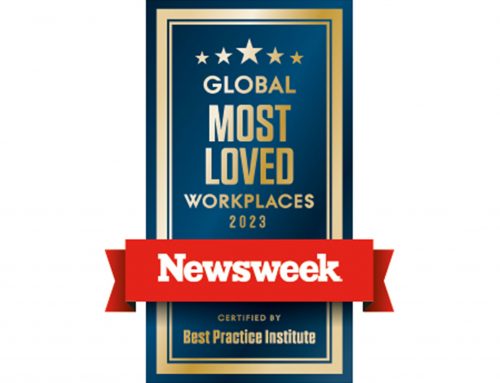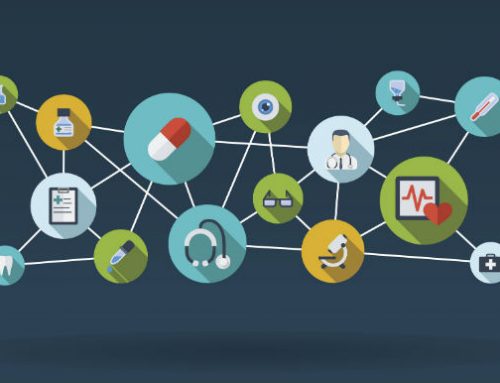Over the past two years, the pandemic has fundamentally changed business communications, propelling the need to lean into new strategies and technologies to keep the lights on. As we begin to take preliminary steps back into the office, business cultures and models continue to evolve. There are a handful of trends emerging in response to the impact these changes are having on internal and external business communications – and the technology needed to define future success.
Trend 1: Workplace Transformation
When COVID-19 emerged, offices and schools shut, pushing us into remote workspaces. There was plenty of uncertainty. In 2022, we have a better picture, and it’s clear that work from home (WFH) for many isn’t just feasible; it’s welcomed and productive. In fact, 81% of workers no longer want to return to the office in a full-time capacity, according to a Harvard Business School survey.
This rapid shift to remote work has driven the need for a digital workplace toolbox with the tools in it that support collaboration, communication, and day-to-day operations. More than ever, these technologies must be implemented as part of a digital workplace strategy aligned with business goals. For a growing number of businesses, a platform that offers cloud convergence of customer experience and employee technologies provides the necessary foundation to support collaborative workflows and enable employees to access their communication tools from any location.
See More: Cloud Vs On-Premises Unified Communications: 4 Differences You Must Know
Trend 2: Focus on User Experience
As businesses become more comfortable with employees working remotely, many question the need to return to the office. Some industry leaders, including Facebook, United Health Group, and Intuit, have already adopted work from home (WFH) as a permanent option, and an even larger number have introduced flexible working models. For example, Amazon enables some employees to work remotely two days a week.
However, many businesses and workers will inevitably return to the office, requiring simple and easy applications to use for both users and admins. This is where a cloud-based, converged communication solution can be incredibly powerful by helping deliver a ubiquitous experience across the enterprise.
Through a single platform, contact center applications and unified communication tools—voice, group/team messaging, web conferencing, call recording, and more—can be used together in the office, from home, or anywhere else remote. And all users have the same availability to them in real-time, from any device.
Trend 3: Flexibility/Simplicity
The past two years highlighted the need for greater flexibility and simplicity. All businesses evolve, grow, and change, and legacy communication technologies often can’t progress with them. Adding new users, locations, and capabilities can be complicated and expensive with a legacy system. Outdated networks can’t handle a jump in demand or the addition of new channels.
More than ever, flexibility and simplicity top today’s business drivers. Businesses need technology to create connected experiences for customers and employees—and easily expand or contract to meet current and future needs. With a single, total experience platform, businesses gain immeasurable flexibility in how they can build out their communications networks. Vendors, hardware, software, and peripherals can be consolidated and standardized to streamline operations and billing. And because costs are on an as-a-service subscription, businesses only need to pay for what they use month after month, year after year.
For example, Avaya customer ACT was looking for a solution after it started experiencing a massive surge in call volume during the pandemic. It became the hub for taking calls for each of its clients (the company went from 2,000 calls to 40,000 calls per day practically overnight). This unanticipated growth needed a solution with a flexible consumption model that could grow and shrink as required – such as the Avaya OneCloud Subscription – while also working hard to standardize their current systems with centralized tools available for all company employees in real-time. By consolidating ACT’s meetings, video and collaboration platforms using Avaya OneCloud, the company saw increased productivity, reduced redundancy and greater user satisfaction, all while reducing overall cost.
Trend 4: Security and Compliance
Regardless of how well an IT team guards a network, there can still be outages, downtime, and other glitches that hinder workers’ ability to communicate and do their work. Interruptions can be incredibly costly and disruptive for businesses that rely on communications as the nexus of their business.
There is also the added complexity of security. When communication channels falter, users can shift to other modes of communication outside of IT’s view. This can introduce a host of security issues. Also, outdated systems often can’t keep businesses compliant with regulations, such as HIPAA, PCI DSS, or GDPR. Regulatory breaches can result in hefty fines, as well as reputation damage.
By choosing a technology that delivers an integrated experience, businesses can design a network that meets their security needs and supports regulatory requirements. Whether that involves tracking customer call center interactions or sharing medical records, a platform that combines contact center and unified communication capabilities can be a vital tool in maintaining both security and compliance.
See More: 9 Reasons to Supercharge Your Business with Unified Communications
Trend 5: Platform/Service Enhancements
If we have learned anything over these last two years, it’s that all businesses face uncertainty. Strategies and technologies that made sense five years ago can be obsolete now. A big advantage of a single platform is that it provides businesses with a cost-effective way to keep communications up to date with the latest technology and software. It eliminates the need to constantly fight for budget and continuously invest in upgrades and versions while offering the most current versions and capabilities. In other words, businesses can leverage the specific technologies that make sense for their environment.
Over time, we will all move past the COVID-19 pandemic. As the path forward increasingly takes shape, it’s becoming clear that a platform that delivers cloud convergence of customer experience and employee experience technologies is a strategic advantage. In fact, it may be one of the best ways to champion change and prepare for the future—delivering the flexibility, scalability, security, and long-term savings that can set a business apart from the competition. And with access to a never-ending flow of new functionality and capabilities, it may just be what is needed for success in the coming years.
Note: These five trends were identified by analyst firm MZA in its private World Business Telephony Forecast – 2021 Edition.
How are you enabling the evolution of business communication? Share with us on LinkedIn, Twitter, or Facebook. We’d love to know all about it!
![]()









